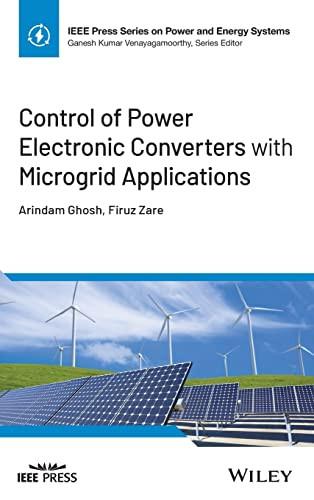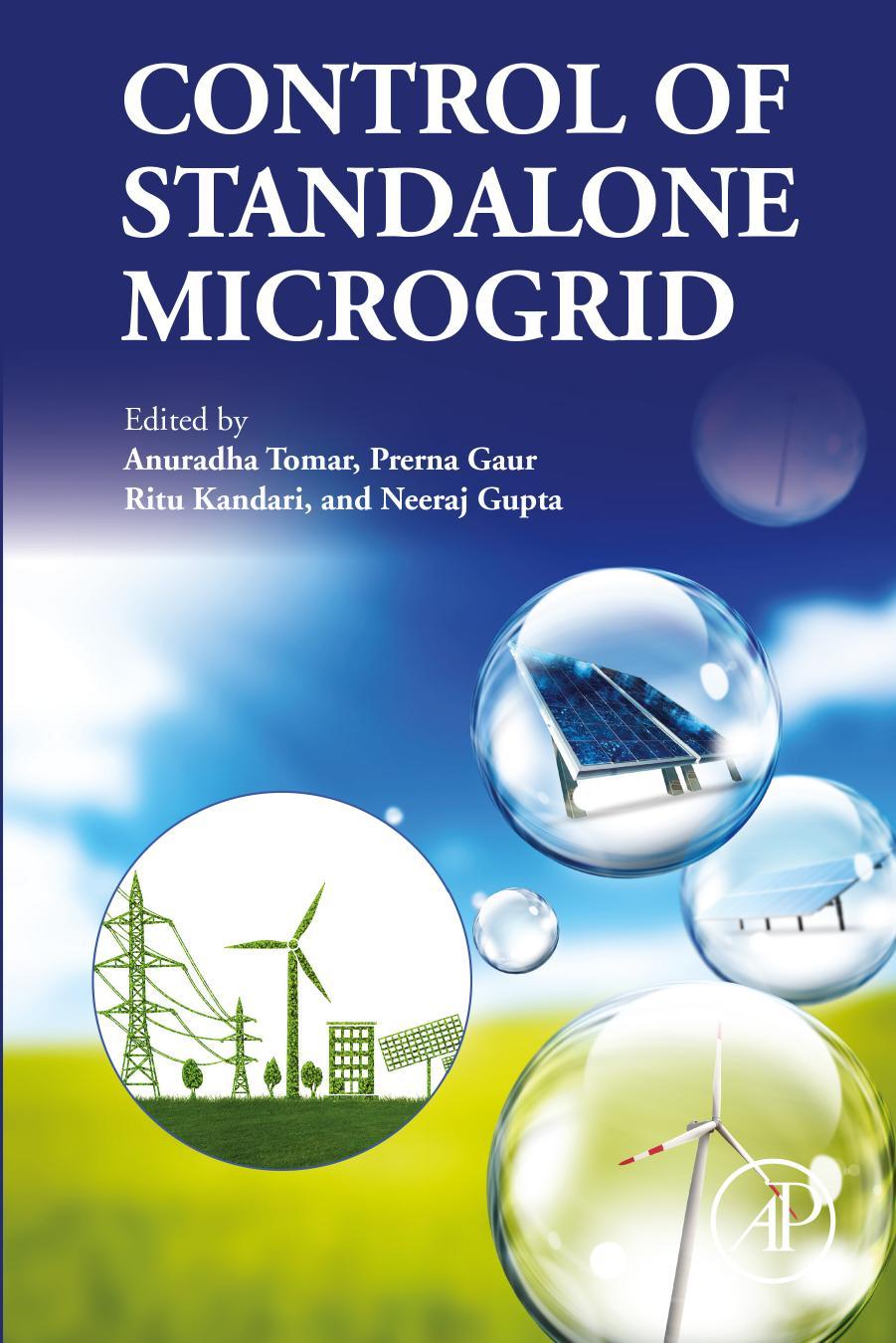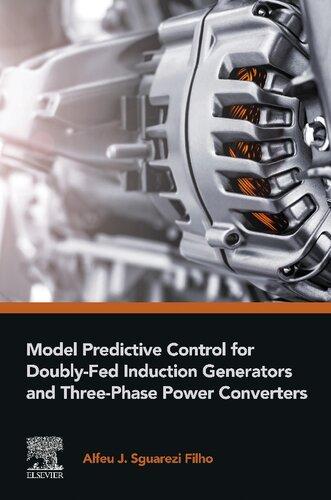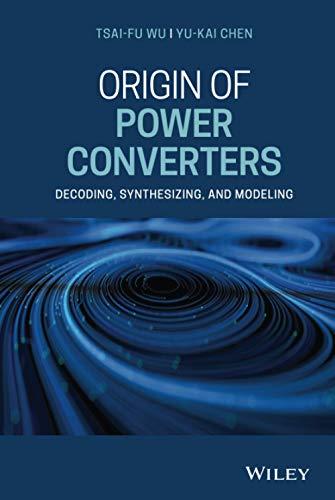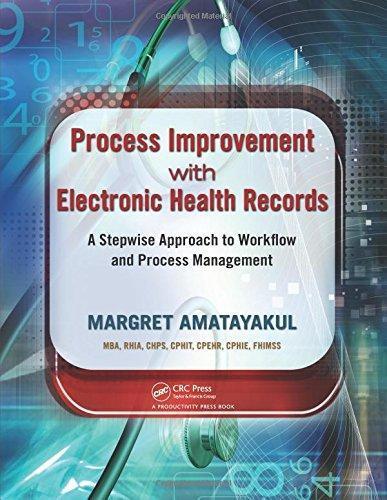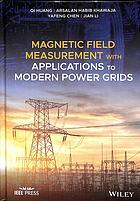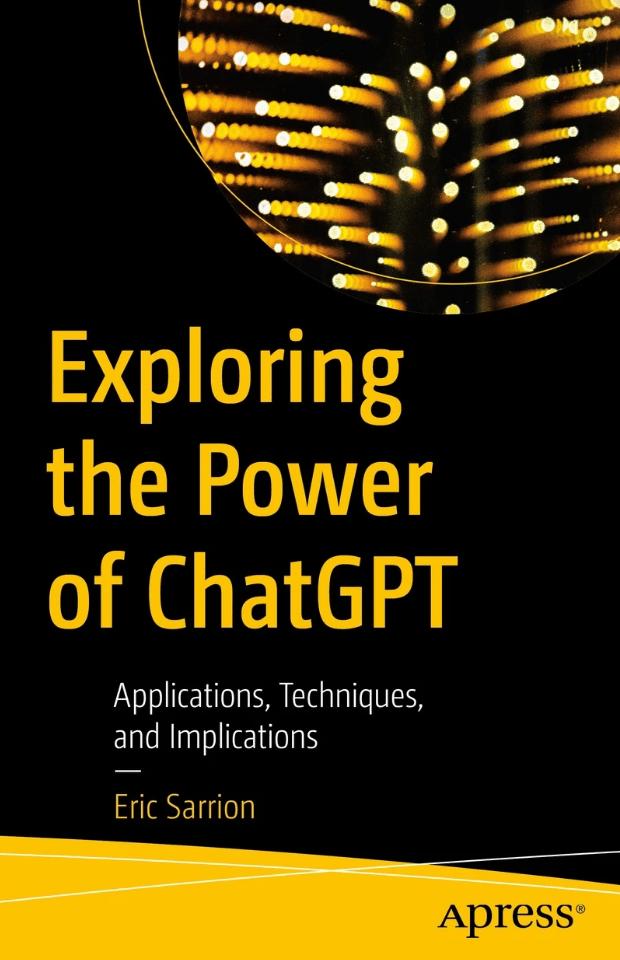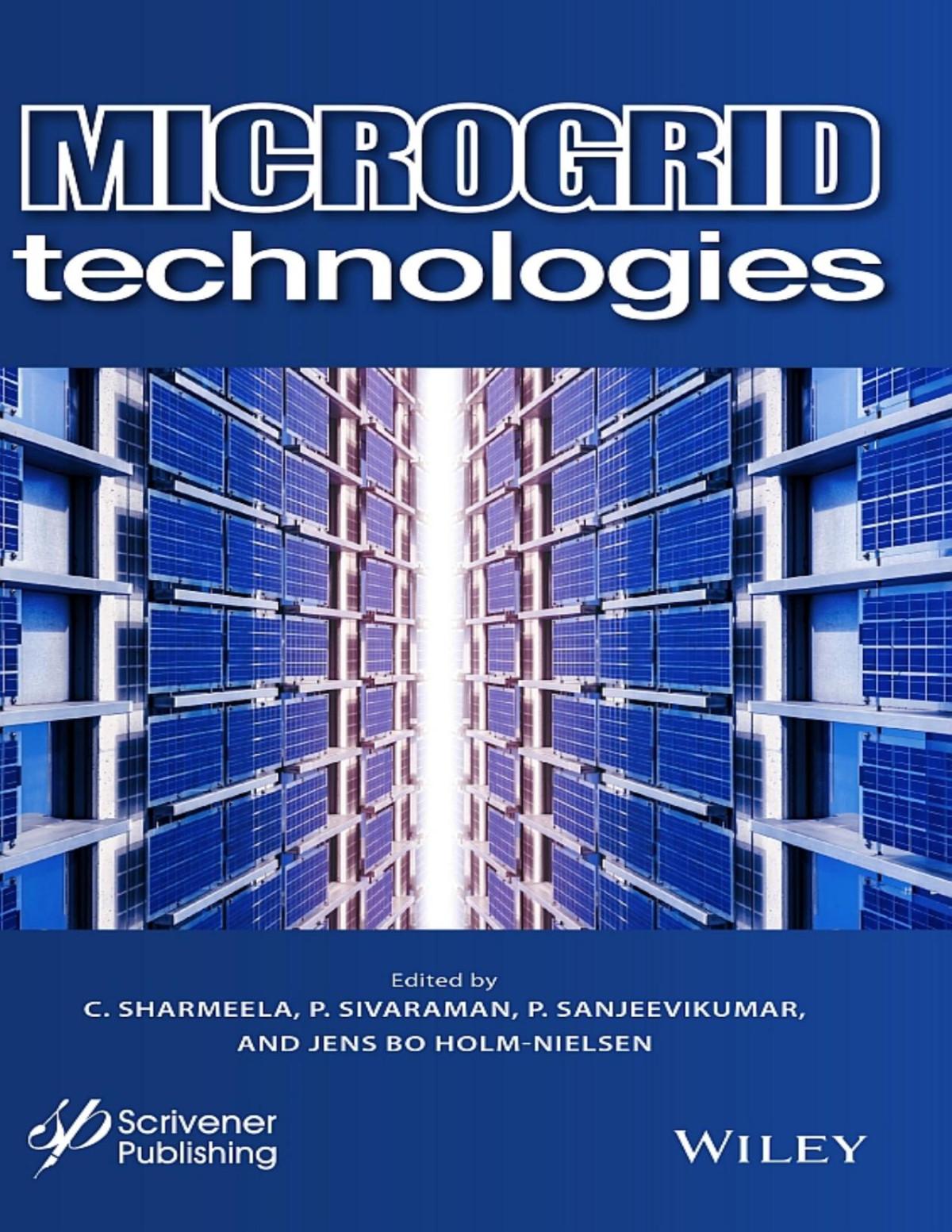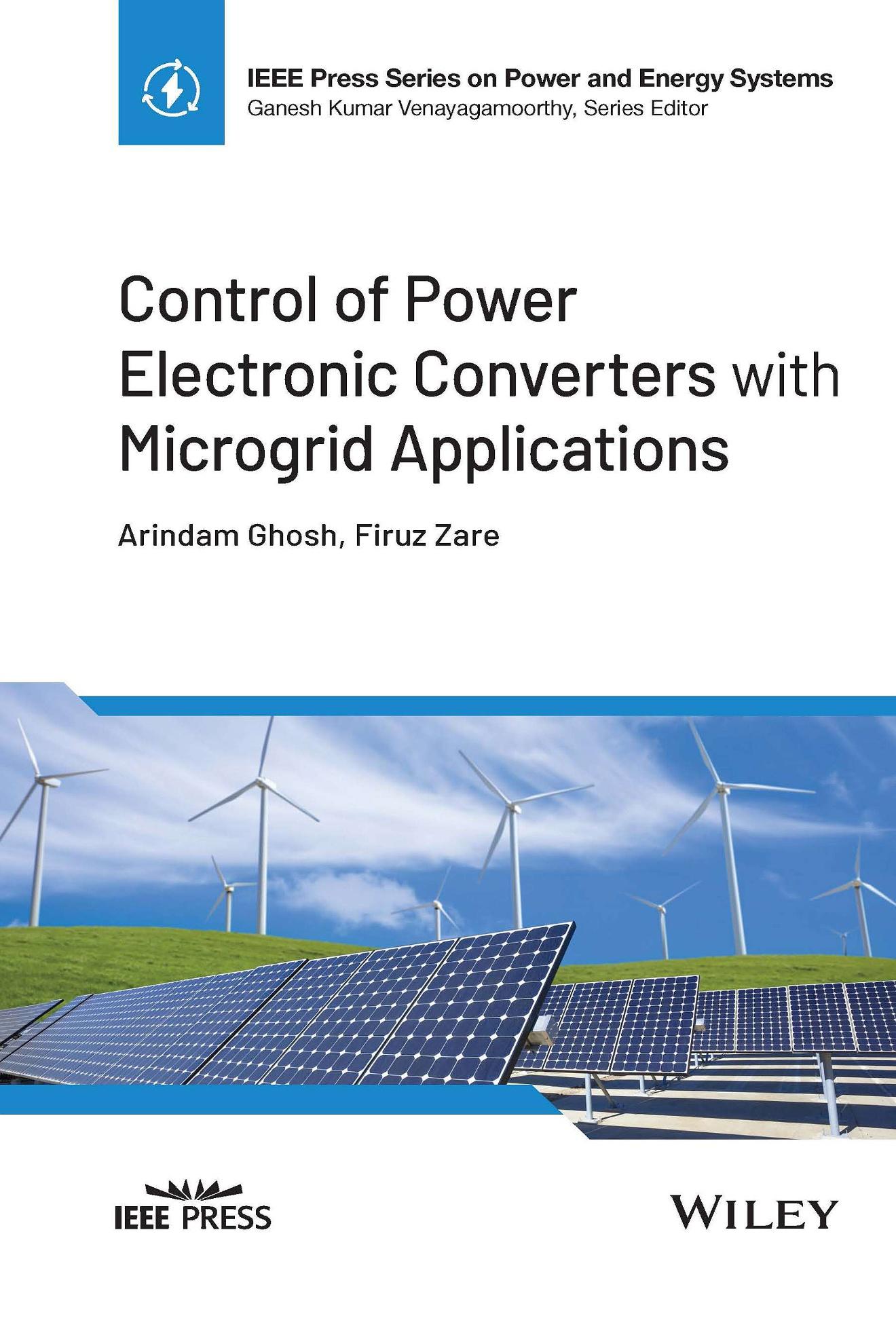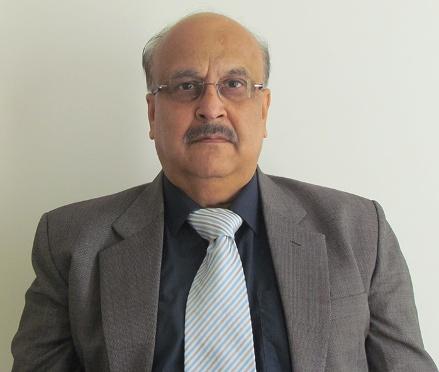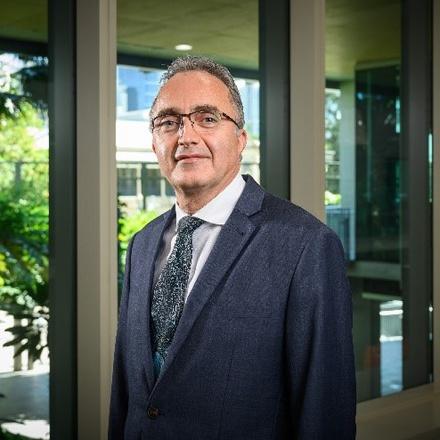ControlofPowerElectronicConverters withMicrogridApplications
ArindamGhoshPhD
CurtinUniversity
Australia
FiruzZarePhD
QueenslandUniversityofTechnology
Australia
IEEE Press Series on Power and Energy Systems
Ganesh Kumar Venayagamoorthy, Series Editor
Copyright©2023byTheInstituteofElectricalandElectronicsEngineers,Inc.Allrightsreserved.
PublishedbyJohnWiley&Sons,Inc.,Hoboken,NewJersey. PublishedsimultaneouslyinCanada.
Nopartofthispublicationmaybereproduced,storedinaretrievalsystem,ortransmittedinany formorbyanymeans,electronic,mechanical,photocopying,recording,scanning,orotherwise, exceptaspermittedunderSection107or108ofthe1976UnitedStatesCopyrightAct,without eitherthepriorwrittenpermissionofthePublisher,orauthorizationthroughpaymentofthe appropriateper-copyfeetotheCopyrightClearanceCenter,Inc.,222RosewoodDrive,Danvers, MA01923,(978)750-8400,fax(978)750-4470,oronthewebatwww.copyright.com.Requeststo thePublisherforpermissionshouldbeaddressedtothePermissionsDepartment,JohnWiley& Sons,Inc.,111RiverStreet,Hoboken,NJ07030,(201)748-6011,fax(201)748-6008,oronlineat http://www.wiley.com/go/permission.
LimitofLiability/DisclaimerofWarranty:MATLAB® isatrademarkofTheMathWorks,Inc.andis usedwithpermission.TheMathWorksdoesnotwarranttheaccuracyofthetextorexercisesinthis book.Thiswork’suseordiscussionofMATLAB® softwareorrelatedproductsdoesnotconstitute endorsementorsponsorshipbyTheMathWorksofaparticularpedagogicalapproachorparticular useoftheMATLAB® software.Whilethepublisherandauthorhaveusedtheirbesteffortsin preparingthisbook,theymakenorepresentationsorwarrantieswithrespecttotheaccuracyor completenessofthecontentsofthisbookandspecificallydisclaimanyimpliedwarrantiesof merchantabilityorfitnessforaparticularpurpose.Nowarrantymaybecreatedorextendedbysales representativesorwrittensalesmaterials.Theadviceandstrategiescontainedhereinmaynotbe suitableforyoursituation.Youshouldconsultwithaprofessionalwhereappropriate.Neitherthe publishernorauthorshallbeliableforanylossofprofitoranyothercommercialdamages,including butnotlimitedtospecial,incidental,consequential,orotherdamages.
Forgeneralinformationonourotherproductsandservicesorfortechnicalsupport,pleasecontact ourCustomerCareDepartmentwithintheUnitedStatesat(800)762-2974,outsidetheUnited Statesat(317)572-3993orfax(317)572-4002.
Wileyalsopublishesitsbooksinavarietyofelectronicformats.Somecontentthatappearsinprint maynotbeavailableinelectronicformats.FormoreinformationaboutWileyproducts,visitour websiteatwww.wiley.com.
LibraryofCongressCataloging-in-PublicationDataAppliedfor
Hardback:9781119815433
CoverDesign:Wiley
CoverImage:©LPETTET/GettyImages
Setin9.5/12.5ptSTIXTwoTextbyStraive,Pondicherry,India
Dedicatedtomywife,Supriya,andmyson,Aviroop,andinlovingmemoryof myparents.
Dedicatedtomylovelyfamily,mywife,Leila,andmyson,Farzan.
FiruzZare
ArindamGhosh
Contents
AuthorBiographies xv
Preface xvii
Acknowledgments xxi
1Introduction 1
1.1IntroductiontoPowerElectronics 4
1.2PowerConverterModesofOperation 7
1.3PowerConverterTopologies 9
1.4HarmonicsandFilters 10
1.5PowerConverterOperatingConditions,Modelling,andControl 12
1.6ControlofPowerElectronicSystems 14
1.6.1Open-loopVersusClosed-loopControl 14
1.6.2NonlinearSystems 16
1.6.3PiecewiseLinearSystems 17
1.7PowerDistributionSystems 18
1.8ConcludingRemarks 20 References 20
2AnalysisofACSignals 23
2.1SymmetricalComponents 24
2.1.1VoltageUnbalancedFactor(VUF) 25
2.1.2RealandReactivePower 26
2.2InstantaneousSymmetricalComponents 27
2.2.1EstimatingSymmetricalComponentsfromInstantaneous Measurements 29
2.2.2InstantaneousRealandReactivePower 34
2.3Harmonics 37
2.4ClarkeandParkTransforms 39
2.4.1ClarkeTransform 39
2.4.2ParkTransform 40
2.4.3RealandReactivePower 41
2.4.4AnalyzingaThree-phaseCircuit 43
2.4.5RelationBetweenClarkeandParkTransforms 45
2.5PhaseLockedLoop(PLL) 46
2.5.1Three-phasePLLSystem 47
2.5.2PLLforUnbalancedSystem 50
2.5.3FrequencyEstimationofBalancedSignalUsing αβ Components 52
2.6ConcludingRemarks 53
Problems 54
NotesandReferences 56
3ReviewofSISOControlSystems 59
3.1TransferFunctionandTimeResponse 60
3.1.1SteadyStateErrorandDCGain 60
3.1.2SystemDampingandStability 62
3.1.3ShapingaSecond-orderResponse 63
3.1.4StepResponseofFirst-andHigher-orderSystems 65
3.2Routh–Hurwitz’sStabilityTest 66
3.3RootLocus 69
3.3.1NumberofBranchesandTerminalPoints 70
3.3.2RealAxisLocus 71
3.3.3BreakawayandBreak-inPoints 73
3.4PIDControl 76
3.4.1PIController 77
3.4.2PDController 78
3.4.3TuningofPIDControllers 81
3.5FrequencyResponseMethods 83
3.5.1BodePlot 85
3.5.2Nyquist(Polar)Plot 89
3.5.3NyquistStabilityCriterion 91
3.6RelativeStability 95
3.6.1PhaseandGainMargins 95
3.6.2Bandwidth 101
3.7CompensatorDesign 104
3.7.1LeadCompensator 104
3.7.2LagCompensator 108
3.7.3Lead–lagCompensator 108
3.8Discrete-timeControl 110
3.8.1Discrete-timeRepresentation 110
3.8.2Thez-transform 111
3.8.3TransformationfromContinuousTimetoDiscreteTime 112
3.8.4Mappings-Planeintoz-Plane 112
3.8.5DifferenceEquationandTransferFunction 113
3.8.6DigitalPIDControl 115
3.9ConcludingRemarks 115 Problems 116
NotesandReferences 120
4PowerElectronicControlDesignChallenges 123
4.1AnalysisofBuckConverter 123
4.1.1DesigningaBuckConverter 126
4.1.2TheNeedforaController 128
4.1.3DynamicStateofaPowerConverter 133
4.1.4AveragingMethod 133
4.1.5SmallSignalModelofBuckConverter 135
4.1.6TransferFunctionofBuckConverter 136
4.1.7ControlofBuckConverter 136
4.2TransferFunctionofBoostConverter 140
4.2.1ControlofBoostConverter 141
4.2.2Two-loopControlofBoostConverter 144
4.2.3SomePracticalIssues 150
4.3ConcludingRemarks 151
Problems 151
NotesandReferences 152
5StateSpaceAnalysisandDesign 153
5.1StateSpaceRepresentationofLinearSystems 154
5.1.1Continuous-timeSystems 154
5.1.2Discrete-timeSystems 155
5.2SolutionofStateEquationofaContinuous-timeSystem 156
5.2.1StateTransitionMatrix 156
5.2.2PropertiesofStateTransitionMatrix 158
5.2.3StateTransitionEquation 159
5.3SolutionofStateEquationofaDiscrete-timeSystem 160
5.3.1StateTransitionMatrix 161
5.3.2ComputationofStateTransitionMatrix 161
5.3.3DiscretizationofaContinuous-timeSystem 162
5.4RelationBetweenStateSpaceFormandTransferFunction 164
5.4.1Continuous-timeSystem 164
5.4.2Discrete-timeSystem 166
5.5EigenvaluesandEigenvectors 167
5.5.1Eigenvalues 167
5.5.2Eigenvectors 168
5.6DiagonalizationofaMatrixUsingSimilarityTransform 170
5.6.1MatrixwithDistinctEigenvalues 170
5.6.2MatrixwithRepeatedEigenvalues 173
5.7ControllabilityofLTISystems 174
5.7.1ImplicationofCayley–HamiltonTheorem 176
5.7.2ControllabilityTestCondition 176
5.8ObservabilityofLTISystems 178
5.9PolePlacementThroughStateFeedback 180
5.9.1PolePlacementwithIntegralAction 183
5.9.2LinearQuadraticRegulator(LQR) 185
5.9.3Discrete-timeStateFeedbackwithIntegralControl 187
5.10ObserverDesign(FullOrder) 187
5.10.1SeparationPrinciple 188
5.11ControlofDC-DCConverter 190
5.11.1SteadyStateCalculation 192
5.11.2LinearizedModelofaBoostConverter 195
5.11.3StateFeedbackControlofaBoostConverter 196
5.12ConcludingRemarks 200 Problems 201 NotesandReferences 204
6Discrete-timeControl 207
6.1MinimumVariance(MV)PredictionandControl 208
6.1.1Discrete-timeModelsforSISOSystems 208
6.1.2MVPrediction 209
6.1.3MVControlLaw 212
6.1.4One-step-aheadControl 214
6.2PolePlacementController 218
6.2.1PoleShiftControl 222
6.3GeneralizedPredictiveControl(GPC) 225
6.4AdaptiveControl 234
6.7ConcludingRemarks 252 Problems 253 NotesandReferences 254 x Contents
6.3.1SimplifiedGPCComputation 233
6.5Least-squaresEstimation 235
6.5.1MatrixInversionLemma 237
6.5.2RecursiveLeast-squares(RLS)Identification 238
6.5.3BiasandConsistency 242
6.6Self-tuningController 244
6.6.1MVSelf-tuningControl 244
6.6.2PoleShiftSelf-tuningControl 248
6.6.3Self-tuningControlofBoostConverter 249
7DC-ACConverterModulationTechniques 257
7.1Single-phaseBridgeConverter 258
7.1.1HysteresisCurrentControl 259
7.1.2BipolarSinusoidalPulseWidthModulation(SPWM) 263
7.1.3UnipolarSinusoidalPulseWidthModulation 265
7.2SPWMofThree-phaseBridgeConverter 267
7.3SpaceVectorModulation(SVM) 271
7.3.1CalculationofSpaceVectors 272
7.3.2CommonModeVoltage 273
7.3.3TimingCalculations 274
7.3.4AnAlternateMethodforTimingCalculations 277
7.3.5SequencingofSpaceVectors 279
7.4SPWMwithThirdHarmonicInjection 282
7.5MultilevelConverters 285
7.5.1Diode-clampedMultilevelConverter 290
7.5.2SwitchingStatesofDiode-clampedMultilevelConverters 291
7.5.3FlyingCapacitorMultilevelConverter 295
7.5.4CascadedMultilevelConverter 302
7.5.5ModularMultilevelConverter(MMC) 302
7.5.6PWMofMultilevelConverters 303
7.6ConcludingRemarks 306 Problems 307
NotesandReferences 307
8ControlofDC-ACConverters 311
8.1FilterStructureandDesign 311
8.1.1FilterDesign 313
8.1.2FilterwithPassiveDamping 315
8.2StateFeedbackBasedPWMVoltageControl 315
8.2.1HPF-basedControlDesign 318
8.2.2Observer-basedCurrentEstimation 321
8.3StateFeedbackBasedSVPWMVoltageControl 323
8.4SlidingModeControl 324
8.4.1SlidingModeVoltageControl 326
8.5StateFeedbackCurrentControl 330
8.6OutputFeedbackCurrentControl 333
8.7ConcludingRemarks 336 Problems 337
NotesandReferences 338
9VSCApplicationsinCustomPower 341
9.1DSTATCOMinVoltageControlMode 342
9.1.1Discrete-timePWMStateFeedbackControl 346
9.1.2Discrete-timeOutputFeedbackPWMControl 348
9.1.3VoltageControlUsingFour-legConverter 351
9.1.4TheEffectofSystemFrequency 353
9.1.5PowerFactorCorrection 357
9.2LoadCompensation 360
9.2.1ClassicalLoadCompensationTechnique 360
9.2.2LoadCompensationUsingVSC 363
9.3OtherCustomPowerDevices 367
9.4ConcludingRemarks 370 Problems 370 NotesandReferences 373
10Microgrids 377
10.1OperatingModesofaConverter 380
10.2GridFormingConverters 381
10.2.1PIControlindq-domain 382
10.2.2StateFeedbackControlindq-domain 385
10.3GridFeedingConverters 389
10.4GridSupportingConvertersforIslandedOperationofMicrogrids 392
10.4.1ActiveandReactiveOveraFeeder 393
10.4.2InductiveGrid 394
10.4.3ResistiveGrid 398
10.4.4ConsiderationofLineImpedances 400
10.4.5VirtualImpedance 402
10.4.6InclusionofNondispatchableSources 405
10.4.7AngleDroopControl 406
10.5Grid-connectedOperationofMicrogrid 411
10.6DCMicrogrids 415
10.6.1P-VDroopControl 417
10.6.2TheEffectofLineResistances 419
10.6.3I-VDroopControl 421
10.6.4DCMGOperationwithDC-DCConverters 423
10.7IntegratedAC-DCSystem 424
10.7.1DualActiveBridge(DAB) 425
10.7.2ACUtilityConnectedDCMG 429
10.8ControlHierarchiesofMicrogrids 430
10.8.1PrimaryControl 430
10.8.2SecondaryControl 432
10.8.3TertiaryControl 433
10.9SmartDistributionNetworks:NetworkedMicrogrids 434
10.9.1InterconnectionofNetworkedMicrogrids 435
10.10MicrogridsinCluster 439
10.10.1TheConceptofPowerExchangeHighway(PEH) 442
10.10.2OperationofDCPowerExchangeHighway(DC-PEH) 444
10.10.3OverloadDetectionandSurplusPowerCalculation 445
10.10.4OperationofDC-PEH 447
10.10.5DynamicDroopGainSelection 448
10.11ConcludingRemarks 456
Problems 457
NotesandReferences 460
11HarmonicsinElectricalandElectronicSystems 465
11.1HarmonicsandInterharmonics 465
11.1.1High-frequencyHarmonics(2–150kHz) 467
11.1.2EMIintheFrequencyRangeof150kHz–30MHz 468
11.1.3CommonModeandDifferentialModeHarmonicsand Noises 469
11.1.4StiffandWeakGrids 470
11.2PowerQualityFactorsandDefinitions 471
11.2.1HarmonicDistortion 471
11.2.2PowerandDisplacementFactors 473
11.3HarmonicsGeneratedbyPowerElectronicsinPowerSystems 474
11.3.1HarmonicAnalysisataLoadSide(aThree-phaseInverter) 477
11.3.2HarmonicAnalysisataGridSide(aThree-phaseRectifier) 479
11.3.3HarmonicAnalysisatGridSide(Single-phaseRectifierwithand withoutPFCorrectionSystem) 484
11.3.4HarmonicAnalysisatGridSide(AFE) 488
11.4PowerQualityRegulationsandStandards 491
11.4.1IEEEStandards 491
11.4.2IEEE519 491
11.4.3IEEE1547 494
11.4.4IEEE1662-2008 494
11.4.5IEEE1826-2012 495
11.4.6IEEE1709-2010 496
11.4.7IECStandards 497
11.5ConcludingRemarks 499
NotesandReferences 499
Index 501
AuthorBiographies
ArindamGhosh
ArindamGhoshisaResearchAcademic ProfessoratCurtinUniversity,Perth, Australia.HeobtainedhisPhDfromthe UniversityofCalgary,Canada.Hewaswith theIndianInstituteofTechnologyKanpur from1985to2006andaResearchCapacity BuildingProfessoratQueenslandUniversityofTechnology,Brisbane,Australia from2006to2013.HewasaFulbright Scholarin2003.HeisaFellowofthe IndianNationalAcademyofEngineering: INAE(2005)andaFellowoftheInstitute ofElectricalandElectronicsEngineers:IEEE(2006).HewasconferredtheIEEE PESNariHingoraniCustomPowerAwardin2019.Hehaspublishedover450peer reviewedjournalandconferencearticlesandhasauthored2books.
FiruzZare
ProfessorFiruzZareisaFellowofthe IEEEandHeadoftheSchoolofElectrical EngineeringandRoboticsatQueensland UniversityofTechnologyinAustralia. Hehasover20yearsofexperienceinacademia,industry,andinternationalstandardizationcommittees,includingeight yearsintwolargeR&Dcentersworking ongrid-connectedinverters,energy conversionsystems,andpowerquality projects.Hehasbeenaveryactivemember andleaderinIEC,Danish,andAustralian standardizationcommitteesandhasbeen
AuthorBiographies
aTaskForceLeader(InternationalProjectManager)ofActiveInfeedConverters todevelopthefirstinternationalstandardIEC61000-3-16withintheIECstandardizationSC77A.ProfessorZarehasreceivedseveralawards,suchasanAustralianFutureFellowship,JohnMadsenMedal,SymposiumFellowship,andearly careerexcellenceresearchaward.HewasawardedatechnologyleadershipprogrambytheDanishInnovationCounciltoattendaone-yearleadershipprogram deliveredbyHarvardBusinessSchoolinBoston,USAin2015.ProfessorZareisa SeniorEditorofthe IEEEAccess journal,aGuestEditorandAssociateEditorofthe IEEEJournalofEmergingandSelectedTopicsinPowerElectronics,andanEditorial boardmemberofseveralinternationaljournals.
Preface
Powerconverterapplicationsinpowersystemshavealonghistory.Oneofthefirst installationsofhigh-voltagedirectcurrent(HVDC)transmissionsystemswason theSwedishislandofGotlandin1954.Mercuryarcvalveswereusedintheproject. Thesewerereplacedbythyristorvalvesin1967.Sincethen,otherthyristor-based deviceslikethestaticvarcompensator(SVC),thethyristor-controlledseriescompensator(TCSC),etc.,startedfindingapplicationsinpowertransmissionsystems. However,withtheadvanceofinsulated-gatebipolartransistor(IGBT)technology, voltagesourceconverters(VSCs)havestartedgainingprominenceinpowersystemapplications.Currently,severalVSC-baseddeviceshavebeenusedinpower transmissionapplications,suchasinVSC-HVDC,flexiblealternatingcurrent transmissionsystems(FACTS)devices,etc.Atthesametime,VSCapplications inpowerdistributionsystemshavebeengainingprominenceincustompower technologiesandinmicrogrids.
Withincreasedconcernsaboutclimatechange,therehasbeenanincreased applicationofpowerelectronicconvertersinpowersystemsandanincreasein theuseofsolarphotovoltaic(PV)orwindpowergeneration.Sincetheserenewable generatorsareintermittentinnature,energystoragedevices(predominantlybatteryenergystorages)arebeingusedforbothstoringenergyandsmoothingpower fluctuations.SinceVSCsgenerateharmonics,theyareequippedwithoutputpassivefilters.Thesefilterscancauseresonancewiththerestofthesystem.Therefore, thecontrolofpowerelectronicdeviceshasgainedprominenceinrecenttimes. AverylargenumberofpublicationshaveappearedindifferentIEEETransactions aboutconvertercontrolsandtheirusages.
Theconceptofamicrogridhasgainedmuchattentioninrecenttimes.Microgridsaresmallpowersystemsthathavedistributedgenerators(DGs),batterystorageunits,andcustomerloadslocatedincloseproximity.Theycaneitherbe connectedtotheutilitygridsorbeoperatedindependentlyinanautonomous mode.Theycanprovidefueldiversityandcanincreasethereliabilityand
xviii Preface
resilienceofpowerdeliverysystems.Microgridshavebeeninstalledincommunities,universitycampuses,hospitals,manufacturingsites,aswellasinmilitary installations.Moreover,remoteareamicrogridshavethepotentialofproviding reliablepowertolocationsthatarefarawayfrompowerlines.Eventhoughsmall ormedium-sizeddieselorgas-firedgeneratorscanbeusedinamicrogrid,powerconverter-interfacedgeneratorsaremostprevalentastheyinterconnectrenewable generatorsandbatterystorages.Therefore,powerconvertercontrolisaverycriticalissueformicrogridapplicationsaswell.
Theaimofthisbookistwofold:toreviewthecontroltheoriesusedforsmart powerconvertercontrolandtoreviewtheapplicationsofthesecontrolconcepts inpowerelectronicconvertersusedinpowerdistributionsystems.Avoltage sourceconvertercanhaveseveraldifferentcontrolaspectsthatdependonits application.However,thebasicprinciplesaresomewhatcommon.Therefore,a systematicapproachhasbeentakenfortheapplication-specificconvertercontrol designinthebook.
Threechaptersinthebookcovercontroltheory.Mostofthematerialsthatare presentedinthesechapterscanbeusedforaseniorlevelundergraduatecourseor ajuniorlevelgraduatecourse.Thereareseveralworkedexamplesanddesigntips thatcanbeusedinMATLAB®,aproductofMathWorks.Theadvantageofusing MATLAB® isthatcomplexcontrolalgorithmscaneasilybetestedandverified usingthissoftware.Inthisbook,MATLAB® hasalsobeenusedforpowerconvertercontrollerdesign,whilethedesignconceptshavebeenverifiedthrough theManitobaHVDCResearchCenter’sEMTDC/PSCADsimulationpackage.
Thebookisorganizedin11chapters.Chapter1introducesthebook.Thischapterpresentsabasicintroductiontopowerelectroniccomponentsandpowerconvertermodesofoperationandtopologies.Theneedforharmonicfilteringisalso discussedbriefly.Sincemostofthepowerconverterscanbemodeledaspiece-wise linearcircuits,theyneedbelinearizedforfeedbackcontroldesign.Thisisalsodiscussedinthischapter.
ThemethodsofanalysisofACsignalsarepresentedinChapter2.Topicssuchas symmetricalcomponents(phasorandinstantaneous),ClarkeandParktransforms,andtheprincipleanduseofphaselockedloop(PLL)arecoveredinthis chapter.
Chapter3providesanin-depthreviewoftheclassicalcontrolforsingle-input, single-output(SISO)systems.Sincemostclassicalcontrolanalysisanddesign approachesaresimilarforbothcontinuous-timeanddiscrete-timesystems,more focushasbeengiventocontinuous-timesystemsinthebook.Topicssuchas Routh–Hurwitz’scriterion,rootlocus,frequencyresponsemethods,Nyquiststabilitycriterion,relativestability,compensatordesign,andthePIDcontrollerand itstuningarecoveredalongwithseveralnumericalexamples.Attheendofthe chapter,discrete-timerepresentationandz-transformarediscussed.
PowerconvertercontroldesigninclassicaldomainisdiscussedinChapter4. Specifically,DC-DCconverters,suchasbuckandboostconverters,areanalyzed indetail.Theprocessofderivingmodelsoftheseconvertersusingaveragingmethodsandthendesigningclassicalcontrollersusingtheselinearizedmodelsare explained.Italsoshowsthatasimpleoutputvoltagecontrolisnotsufficientfor aboostconvertersinceithasaright-halfs-planezero.Atwo-loopcontroldesign isalsopresented.
Statespaceanalysisandcontroldesigninbothcontinuous-anddiscrete-time domainsarepresentedinChapter5.Differenttopicssuchastherepresentation ofaSISOsysteminstatespacedomain,solutionsofstateequations,eigenvalues, andeigenvectorsarecoveredinthischapter.Also,modalanalysisusingdiagonalization,controllability,andobservabilityarediscussed.Astatefeedbackcontrol designusingpoleplacementandalinearquadraticregulatorisexplained.The processofeliminatinganysteadystateerrorusinganintegralcontrolactionisalso described.Attheendofthechapter,theprocessofderivingaDC-DCboostconvertermodelusingstatespaceaveragingaswellasdesigningacontrollerthathasa muchsuperiorperformancearedemonstrated.
Chapter6discussescontrolsystemdesigninthediscrete-timedomain,where prediction-basedcontrollersareexplained.Topicsthatarecoveredinthischapter includeminimumvariancepredictionandcontrol,poleplacementinthepolynomialdomain,generalizedpredictivecontrol,andself-tuningadaptivecontrolthat combinesrecursiveparameterestimationwithcontroldesign.Anumericalexampleoftheself-tuningcontrolofaboostconverterisalsopresented.
Theopen-loopcontrolofDC-ACconvertersiscoveredinChapter7,wherehystereticcurrentcontrolandsinusoidalpulsewithmodulation(SPWM)forboth bipolarandunipolarmodulationsarediscussed.Theconceptofspacevectors andspacevectorpulsewidthmodulation(SVPWM)arealsopresentedinthis chapter.ItalsodiscusseshowtheperformanceofSPWMcanbeimprovedthrough athirdharmonicinjection.Differentmultilevelconverters – suchasdiodeclamped,flyingcapacitor,cascaded,andmodular – arealsodiscussedinthischapter,alongwiththeSPWMmethodsthatcanbeusedinmultilevelconverteroutput voltagemodulation.
Chapter8presentsseveraltechniquesofclosed-loopcontrolofDC-ACconverters,anddiscussesbothvoltageandcurrentcontrollers.Toeliminatetheharmonicsgeneratedbyvoltagesourceconverters,theyareequippedbyoutputpassive LCorLCLfilters.First,atypicalfilterdesignprincipleisdiscussed.Thisisfollowed byadiscussionofthestatefeedbackbasedPWMandSVPWMvoltagecontrolof VSCsandslidingmodevoltagecontrol.Currentcontrol,usingbothstatefeedback andoutputfeedback,isalsodiscussed.
Powerconditioningdevicesthatareusedforpowerqualityimprovementsin powerdistributionnetworksuseDC-ACconvertersthatneedtobecontrolled
insomespecificmannertoachievetheirgoals.Suchdevicesarediscussedin Chapter9,where,inparticular,thestructureandoperatingprinciplesofadistributionstaticcompensator(DSTATCOM)arepresented.Thechapterdemonstrates thatthisdevicecanbeusedforbothvoltagecontrol,whereadistributionbusvoltagecanbecontrolledagainsttheloadharmonicsandunbalance,andforcurrent controlforloadcompensation.Theassociatedconvertercontrolmethodisalso presented.
Chapter10discussesmicrogrids.BothDCandACmicrogridsareconsidered. Theprimarycontrolapplicationsinthesemicrogridsareintheformofdroopcontrollers,whicharecoveredindetailinthischapter.Examplesofdifferentconverter controlprinciplesthatcanbeusedforrenewableenergyintegrationareincluded inthischapteraswellastheevolvingsmartpowerdistributionsystemsthatmay containseveralmicrogrids.Someofthepossibleconnectionandoperatingprinciplesofmicrogridnetworksarediscussed.Specifically,thepowerexchange betweentheconnectedmicrogridthroughadedicatedfeederisdiscussedindetail. Withtheincreasedusageofpowerconvertersinpowersystems,higherfrequencyharmonicshavebeencausingconcernsfortheoperationalhealthof powercomponentsandappliances.InChapter11,someoftheaspectsofharmonic analysisandtheharmonicpropagationaspectsindistributionsystemarehighlighted.Furthermore,thestandardsthatareevolvingtotackletheharmonicproblemarealsopresented.
ArindamGhosh
FiruzZare xx Preface
Acknowledgments
Ithanktwoofmybestfriendsandcollaborators – ProfessorGerardLedwichand ProfessorAvinashJoshi – forthemanyhoursofdiscussionsthatIhavehadwith themoverthelastthreedecades.Manyconceptsinthisbookhavebeenformulatedorclarifiedthroughsuchdiscussions.Thebookisalsoaproductofmy long-timefriendshipandcollaborationwithFiruzandtheenthusiasmthatwe bothhaveabouttheapplicationsofpowerelectronicsinpowersystems.Ialso thankProfessorSaikatChakrabartiforbeingasourceofencouragementandsupportoverthelasttenyears.
IhavebeenveryblessedtohavesomeoutstandingPhDstudents.Thecritical discussionsthatIhavehadwiththemhaveenrichedmyknowledgeinthediverse areascoveredinthisbook.Inparticular,IthankProfessorMaheshMishra, ProfessorRajeshGupta,ProfessorAnshumanShukla,DrAmitJindal,DrRitwik Majumder,DrManjulaDewadasa,DrAlirezaNami,AssociateProfessorPooya Davari,DrMeghaGoyal,DrEhsanPashajavid,DrAmitDatta,andDrBlessyJohn forhelpingtoclarifydoubtsandfortheircontributionsintheformulationofseveralconceptsthathavebeenincludedinthebook.
Ithankmywife,Supriya,forcarefullyproofreadingtheentiremanuscriptand myson,Aviroop,formakingcriticalcommentsaboutseveraltechnicalelements inthebook.Ialsothankthemforprovidingmewithmentalandmoralsupport duringthestressfultimesintheprocessofwritingthisbook.
ArindamGhosh
Iknowmanypeopleinindustry,academiaandstandardizationcommitteeswho havecontributedtothedevelopmentandthecreationofknowledgeinpowerelectronics,harmonics,andpowerqualitystandards.Iwouldliketostartbythanking myPhDsupervisorandcolleagueProfessorGerardLedwichforhisadviceand contributionduringmyPhDprogramandlaterasacollaborator.Ihaveknown ProfessorFredeBlaabjergsince2001whenImovedtoDenmark.Iwouldlike tothankhimforhiscontributionandtechnicaldiscussionsonseveraljoint projects.
Manythankstomypost-docsandPhDstudents.Wehaveworkedtogether ondifferenttopicsandindustry-basedprojects.Inparticular,Iwouldliketo thanktoDrAlirezaNami,DrJafarAdabi,DrPooyaDavari,DrJalilYaghoobi, DrAbdulrahmanAlduraibi,DrDavoodSolatiAlkaran,DrHamidSoltani, Mr.ArashMoradi,Mr.AmirGanjavi,andMr.KiarashGharaniKhajehfortheir contributionanddevelopmentofnewideasonmultil-levelconverters,gridconnectedinverters,harmonics,andelectromagneticinterferences.
ItwasagreatopportunitytoworkintwolargeR&DcentersinDenmark.Many thankstomycolleaguesattheDanfossandGrundfoscompanieswhereweworked ondifferentchallengingelectromagneticcompatibility(EMC)andharmonicmitigationsforlow-andhigh-powerconverters.MyspecialthankstoDrDinesh KumaratDanfoss:wehavehadinterestingtechnicaldiscussionsonmanyprojects,productdevelopments,andproofofconcepts.
IwouldliketothankmyprofessionalcolleaguesandtechnicalexpertsonIEC, Danish,andAustralianstandardizationcommittees.Wehavebeenworkingonthe developmentandmaintenanceofseveralstandardsandcompatibilitylevels since2013.
Finally,IwouldliketothankProfessorArindamGhosh,mymentor,colleague, andfriendwhomIhaveknownsince1999whenIwasaPhDstudentatQUT.He hasinspiredandhelpedmewithgeneroussupportandadviceatseveralstagesof mycareerwithunforgettablememoriesonmanyjointprojects,andprofessional andsocialactivities.Ithasbeenanhonorworkingwithhimandcontributingto thepreparationofthisbook.
FiruzZare
Powerelectronicconvertersareusedinmyriadapplications.Someoftheseare adjustablespeedmotordrivesystems,high-voltagedirectcurrent(HVDC)power transmission,flexiblealternatingcurrenttransmissionsystems(FACTS),power conditioningcustompowerdevices,andmicrogrids.Severalpowerelectronic installationsusetraditionalthyristor-basednaturallycommutatedpowerconverters,whichhavebeeninuseforoverhalfacentury.However,withtheadventof high-powerinsulated-gatebipolartransistors(IGBTs),voltagesourceconverters (VSCs)havebecomeincreasinglypopularinalmostalltheapplicationsmentioned above.
Withthepresent-dayconcernsaboutclimatechangeanditseffectsonthewellbeingofalllivingcreaturesofourplanet,anincreasedamountofrenewable energysourceshasbeenintegratedwithmodernpowersystems.Traditionally, powerisgeneratedthroughlargeturboalternatorsthatarerotatedatafixed speed.Notethatthesystemfrequencyisdirectlyrelatedtothegeneratorspeed (n =120 f/P, n isthegeneratorspeedinrpm, f isthefrequencyinHz,and P is thenumberofpoles).Usually,theseturbogeneratorshavelargeinertiathathelp inmaintainingsynchronismduringfaultsortransientdisturbances.Renewable generators,ontheotherhand,providelowinertiaandareoftenintegratedthrough powerelectronicconvertersandthereforecannotmaintainsystemfrequency.Specialcontrolstrategiesarethereforeadoptedfortheintegrationofrenewable generators.
Renewableenergy,asthenamesignifies,isaformofenergythatisreplenished constantly.Forexample,oursunisanabundantsourceofenergy,anditshines throughouttheyearinallpartsoftheworld.Similarly,windblowsallthetime, whileitsspeeddependsonthetimeofdayandtheterrain.Thesetwoarethemost prominenttypesofrenewableenergythatareusedforelectricitygeneration.An excellentresourceforrenewableenergyisthebookbyMasters[1].
ControlofPowerElectronicConverterswithMicrogridApplications,FirstEdition. ArindamGhoshandFiruzZare.
©2023TheInstituteofElectricalandElectronicsEngineers,Inc. Published2023byJohnWiley&Sons,Inc.
Theotherformsofrenewableenergysourcesarewater(e.g.hydro,wave,and tidal),geothermal,etc.Outofthese,hydroandgeothermalplantsarelocation dependent.Hydropoweristheproductionofelectricalpowerusingthegravitationalforceoffallingorflowingwater,whereelectricityisproducedbyplacing aturbinegeneratorinthepathoftheflowingwater.Forthis,catchmentareas, waterheights,andacontinuousflowofwaterarerequired.Usually,hydroplants areplacedinmountainousterrains.Hydropoweristhemostcommonformof renewableenergy,whichaccountsforabout16%oftheworld’selectricitygeneration.Thetotalinstalledcapacityofhydropowerin2020is1330GW[2].
Apowerfulformofnaturalenergyisgeneratedbythegravitationofthemoon andthesun,whichcauseslowandhightidesalmosttwiceperday.Themovement oftherisingandfallingsealevelaltersthepotentialenergyofwaterthatcanbe convertedintoelectricitybytheoperationofapowerplant.Tousethisenergy,a damwalliscreatedtoencloseacertainamountofseawaterinanartificialbay servingthepurposeofareservoir,justlikeahydropowerplant.Whenthetide rises,thewaterentersthereservoirthroughaturbinewhichproduceselectric energyuntiltheseawaterinsidethereservoirisalmostashighastheoutsidewater level.Atlowtide,thereverseprocessoccursandthewaterinsidethereservoirexits intotheseathroughtheturbine.Notethatthesetwoseparateprocessesarenot continuousasthereisapauseofabouttwohoursbetweenthesetwo.Thetidal powerhastremendouspotential;however,itisstillintheexperimentalstageof developmentduetotheexcessivecostinvolved.Otherformsofwaterpowerthat arealsointheexperimentalstageareoceancurrentandwavepowerplants.
Geothermalenergycomesfromthecoreofourearth.Thecenteroftheearthis 6400kmbelowthesurface.Sincethetemperaturethereisabout4200 C,itishot enoughtomeltrockintomagma.Themoltenrockformstheoutercore.Theheat fromthecorerisestotheearth’smantle,whichisthelayerthatsurroundsthecore. Itisthisenergythatpowersvolcanoes,geysers,andhotsprings.Inageothermal plant,waterispumpedintotheearth’smantleandtheresultantsteamthatrisesis usedforelectricitygenerationusingsteamturbines.Geothermalplants,however, haveafinitelifetime.Theenergyproductionceaseswhenthemantleatthelocationoftheplantcoolsdownduetothecontinuousextractionofheatenergy.
Therearetwopossiblewaysofgeneratingsolarpower:throughphotovoltaic (PV)arrayandthroughconcentratedsolarpower(CSP),whichisalsoknown assolarthermalpower.InCSP,powerisgeneratedusingmirrorsandlensesto concentratesunlightoveralargeareaontoareceiver.Theconcentratedlightthen producesheatenergy,whichdrivessteamturbinestoproduceelectricityusing thermalgenerators.Itistobenotedthatwaterisnottheonlysourcethatcan beusedforheatextractionfromCSP:moltennitritesaltandhydridesarealsoconsideredfortheirhigherheatretentionproperties.Spainistheleadingcountryin CSPinstallation,followedbytheUnitedStates.
Mostofthetechnologiesmentionedaboveuserotarygeneratorstoproduce energywithoutanyrequirementofpowerelectronicconverters.This,however, isnotthecaseforsolarPVandwindgeneratorsastheyrequirepowerelectronic converters.APVarrayproducespoweratDCvoltage,whichisthenboosted throughaDC-DCconverter.TheDC-DCconverterisalsooftenusedformaximum powerpointtracking.TheDC-DCconverteroutputisconvertedintoACthrougha VSCforgridconnection.
Thereareseveraltypesofwindturbines.Theseare[3]:
• Type1:Fixedspeedinwhichasquirrel-cage,self-excitedinductiongeneratoris directlyconnectedtothegridthroughatransformer.Theturbinespeedissynchronizedwiththegridfrequencyandistherefore(nearly)fixed.
• Type2:Limitedvariablespeedinwhichawoundrotorinductiongeneratoris connecteddirectlytothegridthroughatransformer.Thegeneratorcontains avariableresistorintherotorcircuit,whichcancontroltherotorcurrent quicklytokeepthepowerconstant,evenduringgridorwinddisturbance.
• Type3:Variablespeedwithpartialpowerelectronicconversionusingdoublyfed inductiongenerator(DFIG).Inthis,thereareapairofVSCsthatareconnected back-to-backontheDCsidethroughacapacitor.Thegridsideconverter exchangespowerwiththegridandholdstheDCbusvoltage,whiletherotor sideconvertercanalmostinstantaneouslycontrolthemagnitudeandangleof rotorcurrent.ThemajoradvantageoftheDFIGisthatitcanbringaboutalarge controlofpowerinthestatorcircuitwhileusingconvertersthathaveamuch smallerratingthanthemachine.
• Type4:Variablespeedwithfullpowerelectronicconversioninwhichapermanentmagnetsynchronousgeneratorisconnectedtothegridthroughfull-rated back-to-backconverters.Theturbine,inthiscase,isallowedtorotateatitsoptimalaerodynamicspeedharnessingmaximumpower.Also,theneedofabulky gearboxiseliminatedsincethemachinespeedisseparatedfromthegridfrequency.TheturbinesideconverterconvertsthegeneratorvoltageintoDC andthegridsideinverterinjectspowertothegridatratedorprevailinggrid frequency.
Recently,severaloffshorewindfarmshavebeeninstalled.Thepowerfromthese plantsissuppliedtothemainlandthrougheithersubmarineDCcablesathigh voltageorthroughmultiterminalHVDCsystems.AlloftheseemployVSCsfor powerconversion.
Thereareseveralsmallergeneratorsthataredeployedinpowerdistributionsystems,thoughnotallofthemnecessarilyuserenewableenergy.Themostprevalent amongthesearetherooftopsolarPVsystems,whichgeneratepowerwithanoutputDCvoltagelevel.ThesearethenconvertedintoACthroughDC-ACpower converters.Thereareotherssuchaswind,fuelcells,andmicroturbinesthat
4 1Introduction
usepowerelectronicconverters.Collectivelythesegeneratorsarecalleddistributedgenerators(orDGs)becausetheyaredistributedthroughoutpowerdistributionssystemsandareplacedclosetowheretheenergyisconsumed.Manyof therenewablesources(e.g.solarandwind),however,areintermittentinnature. Therefore,storagesystemsarerequiredtomaintaincontinuityofthepowerflow. TheDGs,togetherwiththeenergystoragesystems,areusuallycalleddistributed energyresources(orDERs).Themostcommonenergystoragesuchasbattery energystoragesystems(BESS)requirepowerconvertersforconvertingDCvoltage intoAC.
Fromtheabovediscussion,itisevidentthatpowerelectronicconvertersplaya verycrucialroleinthemodern-dayoperationofpowersystems.Therefore,the controloftheseconvertersisalsoverycrucialforthesmoothandstableoperation ofpowersystems.Section1.1presentsabriefintroductiontopowerelectronics.
1.1IntroductiontoPowerElectronics
Powerelectronicsessentiallyispowerprocessing.Itistheapplicationofelectronics,control,andsignalprocessingtoadjust,regulate,orcontrolelectricalenergy. Powerelectronicsconsistsofpowerandelectroniccircuitry.Inthepowercircuitry, DCorACenergysourcesareconvertedtoregulateoradjustvoltageorcurrent waveformsintheformofDCorACwithspecificamplitudeorfrequencysuitable fordifferentapplications.Figure1.1showsaschematicdiagramofapowerelectronicssystem,whichconsistsofaninputsource,apowerconverter,aload,anda controller.
TheinputsourcecanbeDC(e.g.BESS,solarPV,fuelcell,etc.)oranAC(e.g. grid,windturbine,etc.).Insomeapplications,theDCsourcecanbeintheformof
Figure1.1 Schematicdiagramofapowerelectroniccircuit.
1.1IntroductiontoPowerElectronics 5
capacitorsthatcanstoreenergy.Furthermore,inanACsystem,theinputcanbe single-orthree-phase.TheloadscanbeeitherACorDC.Theycanoperateat eitherhighorlowvoltage,wherethefrequencycanbevariableinthecaseof ACapplications.Forexample,inhomeapplications,powerelectronicsisused inbatterychargers(cellphones,laptops/desktops),electricmotors,andinduction cookingdevicesamongothers.
Thepowerconverterconsistsofsemiconductorswitchingdevicesandpassive elements,suchasmagneticdevicesandcapacitors.Thesemiconductorswitching devices,suchasMOSFETs(metaloxidesiliconfieldeffecttransistor)orIGBTs, canoperateathighvoltageandcurrentratingsthataresuitablefordifferent applications.
Thecontrollerunitconsistsof(i)measuringdevicesincludinginputand outputvoltageandcurrentsignalstomonitorandprotectthesystem,(ii)amicrocontrollerwithsignalprocessingcapability,and(iii)digitalandanalogelectronic circuits.Thecontrollersynthesizessignalsintheformofpulsessuitableforthe powerconvertertoconverttheinputenergysuitableforaload.Theinterface betweenthecontrollerandthepowerconverteristhroughgatedrives,whichtake thecontrolsignalsbasedonapulsepatternandturnthesemiconductorswitches onandoffathighvoltageandcurrentamplitudes.
Overall,themainaimofmodernpowerelectronicsystemsistoconvertand deliverinputpowerwithmaximumefficiency,highquality,minimumcost,and weight,inanintegratedandhigh-powerdensitycircuit.
Themaincomponentsusedinthecontrollerandthegatedriveunitsareshown inFigure1.2.Asthevoltageandcurrentratingsofthecontrollerandgatedrives
Figure1.2 Themainactiveand passivecomponentsusedin controllersandgatedriveunits.
Power Diodes
Figure1.3 Themainactiveand passivecomponentsusedin powerconverters.
areverylowcomparedtothepowerconverters,resistors,andoperationalamplifiers(OPAMPS),linearmodeswitchesareusedintheseunitswithoutanylossdue totheirhighefficiency.Ontheotherhand,theircircuitryanddesignareverycomplexasthetotalpowerelectronicssystemneedstobemonitoredandcontrolled throughtheseunits.
Thepowerconverterconsistsoffourmaincomponents,asshowninFigure1.3. Resistorsandpowerswitchesinlinearmodearenotusedinthepowerconverters, becausetheyincursignificantlosseswhencurrentspassthroughthesecomponents.Theenergyconversionisusuallybasedonapulsewidthmodulation (PWM)methodwhereadesiredsignalisgeneratedbypulsepatternsathigherfrequencies.Theswitchingdeviceschoptheinputvoltageorcurrent(athighvoltage and/orcurrentrating)basedonthecontrolsignalssynthesizedbythecontroller. Thus,themajorissuesofthepowerelectronicssystemare(i)thegenerationharmonicsandhigh-frequencynoiseswhichshouldbecontrolledandmitigatedusing filtersand(ii)conductionandswitchinglosses.
Figure1.4showsfourdifferentconfigurationsofpowerconvertersthatcanconvertenergyfromDCorACsourcestoadjustableandregulatedDCorACcurrent orvoltagewaveformssuitablefordifferentloads.Figure1.4ashowsaDC-DCconverterthathasaninputDCvoltagesource(e.g.batteryorPV).Theoutputvoltage canbeadjusted(increasedordecreased)duringtheoperation,asinaDCmotor controlorregulatedpowersupplies.InFigure1.4b,theenergyfromanACsource (fixedorvariableamplitudeorfrequency),canbechangedintoanACsignalwith adjustableamplitudeandfrequency,asinvariablespeedmotordrivesystems,or withregulatedamplitudeandfrequency,asingrid-connectedrenewableenergy
Capacitors
Inductors and Tranformers
Power Switches
Circuit Elements
